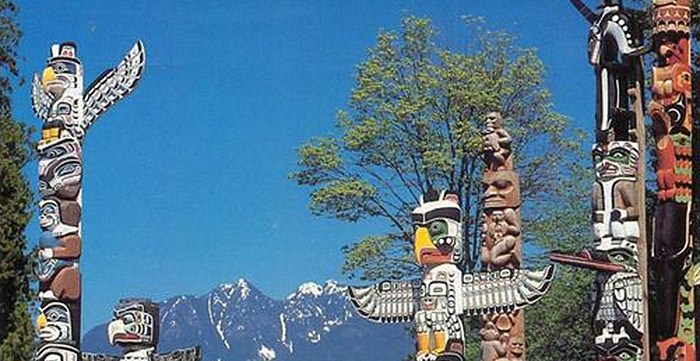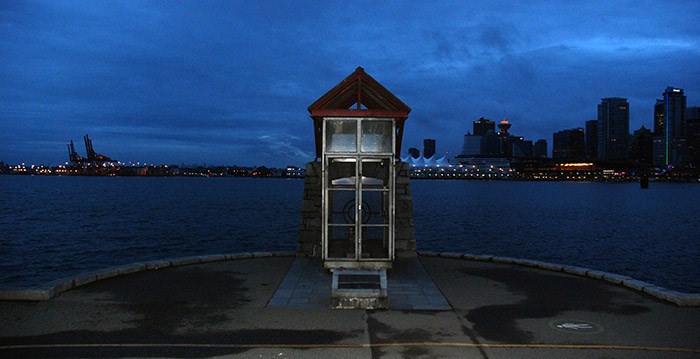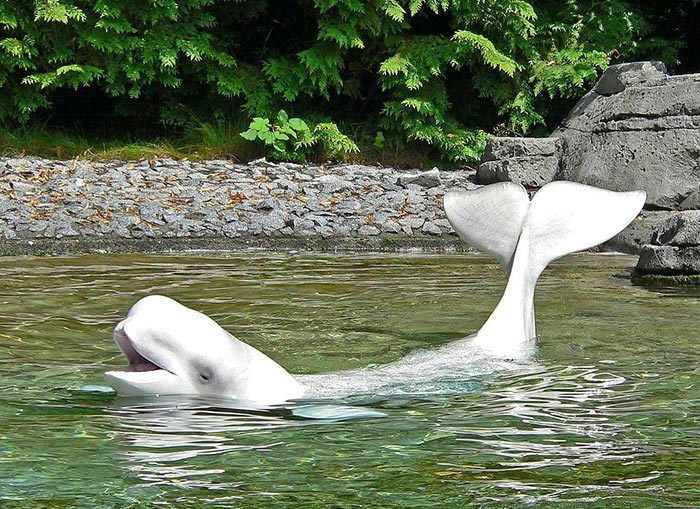In 2015, we took a 1990’s guide to Â鶹´«Ă˝Ół»sightseeing so we could get a sense of how much the city has changed. Follow this disjointed adventure as it unfolds, or learn more about the series

Stanley Park
This was a dumb idea. It’s just after 5 am on a Saturday morning and I’m sitting beside the Nine O’clock Gun in Vancouver’s Stanley Park. I’m here under the advice of my guide, to experience Vancouver’s #1 tourist attraction: the beauty of nature from the city’s most loved park. After the bar I was in closed, and after a nightcap at home, sunrise seemed like the ideal time to do it. A sound plan, except for the fact that you can’t see the sunrise if you can’t see the sun. It’s cloudy, cold and about to rain.
“The natural world intrudes on the city’s busy urban life at every corner,” my guide says. When I hatched this plan under the misguided influence of alcohol, I envisioned a rising, easterly sun with the north shore mountains making their towering presence known, birds awakening in cheerful song, and light reflecting in the pacific waters that shape the various neighbourhoods I’ve called home for 16 years. Then I’d peel off all my clothes off, climb onto the back of a mist-spouting Orca whale, and ride into the past with my guide — nude and at one with nature — where we'd never feel out of place, surrounded by a constant comfort of sameness. Instead, it’s just begun to rain.

“Vancouver’s annual precipitation averages 1113mm,” my guide announces. I can’t tell if it’s reciprocating my desire for consistency, trying to piss me off, or showing me it still has some element of accuracy contained within its pages. I found it at the back of a Commercial Drive thrift store only days earlier, where it probably would have sat forever, because let’s face it, nobody wants an outdated guidebook. It’s kind of sad really, but for now, we’re both in this thing together and it’s time to get going.
My mission: to travel through time. My guide: a Lonely Planet travel book published in 1999; the same year I moved to Vancouver. My goal: see if the city I fell in love when I first arrived still exists, and ultimately decide if it’s still worth living in. When I’m done this experiment, my guide will undoubtedly be returned to a life without purpose, so I’m going to light it on fire and destroy it on the sands of Sunset Beach instead. It’s better to burn out than to fade away on a bookshelf.
Beluga Whales living in Stanley Park’s aquarium:
- 1999: 5
- 2015: 2
 The Polar Bear display has sat vacant since 97, and in 1996, the Park Board instituted bylaws to prevent capture of marine mammals from the wild for display purposes. Image: Stan Shebs
The Polar Bear display has sat vacant since 97, and in 1996, the Park Board instituted bylaws to prevent capture of marine mammals from the wild for display purposes. Image: Stan Shebs
Price of an entree at the Stanley Park Teahouse:
- 1999: Aprox. $22.00
- 2015: $16.00 to $35.00
At this hour, from this park, in this rain, Â鶹´«Ă˝Ół»doesn’t look like it’s changed much since the 90’s. My guide goes on at length, and in full colour, about Halleluiah Point (the point the gun sits on), Brockton Point, just about every other point in the park, and the 9000 sea creatures that call the Â鶹´«Ă˝Ół»Aquarium their home at that time.
Except for the recent closure of the Stanley Park Fish House, reducing the park’s restaurant options to two, it’s a pretty safe bet that everything my guide suggests we visit is still here. And when it tells me that Stanley Park mirrors the size of Vancouver’s downtown core almost exactly, I decide the caged gun is all I can manage. I’m already tired.
“Â鶹´«Ă˝Ół»has a lot more to offer than its postcard good looks,” the guide says, sensing my boredom and realizing it has failed to show me a beautiful sunrise free of cloud and drizzle. I almost detect a desperation, a nervousness, a fear in its words as we step out of Stanley Park’s safe, seemingly static nature, for something more challenging: the ever changing grid of the city.


